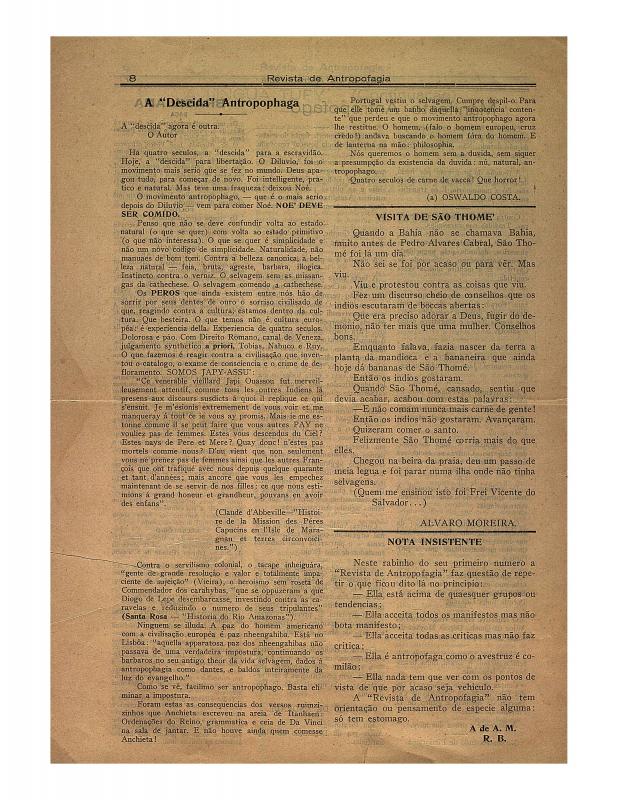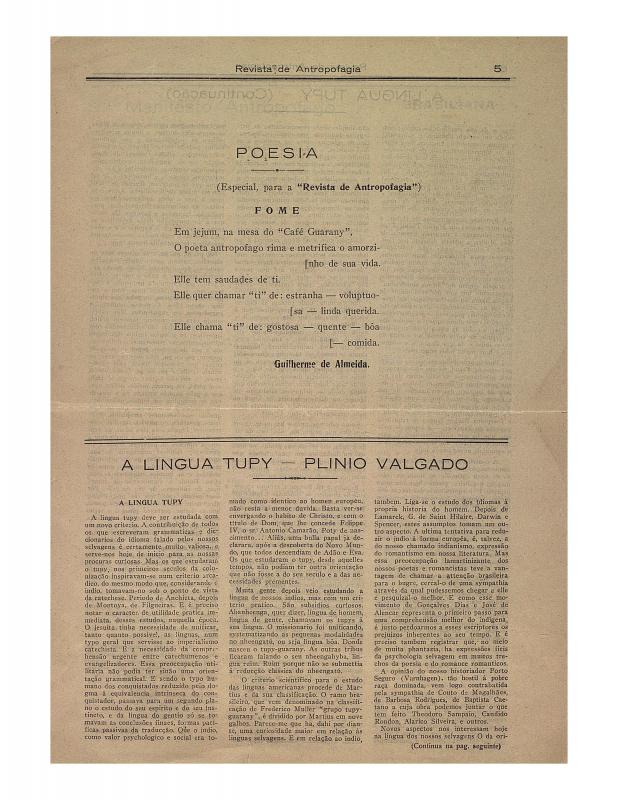Mário Pedrosa contextualizes the work of Bahian painter Rubem Valentim within Brazilian history. Once he affirms the “anthropophagic” nature of his work, he compares it to two paradigmatic models that share the same focus: Tarsila do Amaral and Alfredo Volpi. In the author’s judgment, Brazilian art synthesizes local and universal values, primitivism and contemporary times. Valentim’s work references the symbols of African religions within the constructivist tradition of modern art.
[For more on this topic, see the following texts in the ICAA digital archive: by Oswald de Andrade, “Manifesto Antropófago” (doc. no. 771303 ); by Oswaldo Costa, “A ‘descida’ antropophaga” (doc. no. 784397); and by Plínio Salgado, “A língua tupy” (doc. no. 784419)].
Mário Pedrosa (1900–81) was an intellectual and politician, and undoubtedly the key theoretician and critic on Brazilian art of the 20th century. He began as an international politics correspondent for the Diário da Noite, and beginning in the 1920s he was affiliated with the PCB (Communist Party of Brazil). He was imprisoned in 1932 because of his political militancy (Trotskyism). During the Estado Novo of Getúlio Vargas, he lived in exile in France and New York, and only returned to Brazil after the Second World War, when he worked for the Correio da Manhã. His opposition to Stalinism led him to found the Vanguarda Socialista, a weekly publication. He presented a thesis on aesthetics called “Da natureza afetiva da forma na obra de arte” (1949) at the School of Architecture (Rio) that made use of his philosophical background, and his knowledge of Gestalt psychology; during that time he also became one of the founders of the AICA (1948) and also organized the International Conference of Art Critics (Brasilia, 1959). He wrote an arts column for the Tribuna da Imprensa (1950–54) and was an organizing member of the II and III São Paulo Biennials (1953 and 1955), later becoming director of the MAM-SP (1961–63). He served as secretary for the National Council of Culture during the brief government of Jânio Quadros. During the military dictatorship he took refuge in Chile, where he became director of the Museo de la Solidaridad in Santiago; after the Pinochet coup (1973), he left for Havana, where he served as secretary for the Museo de la Resistencia Salvador Allende. He only returned to Brazil in 1977 (at the beginning of the amnesty) and was the first to sign the manifesto creating the PT (Party of Workers, 1980). His vast library (which included eight thousand volumes) is partially available at the national library in Rio de Janeiro.



